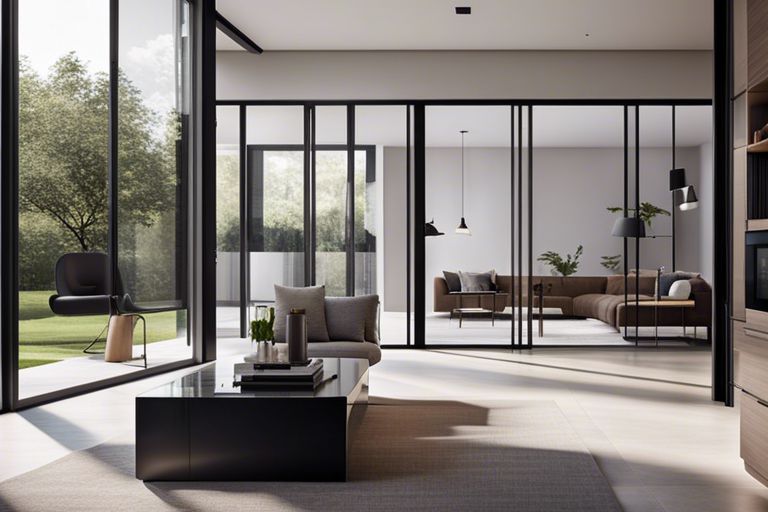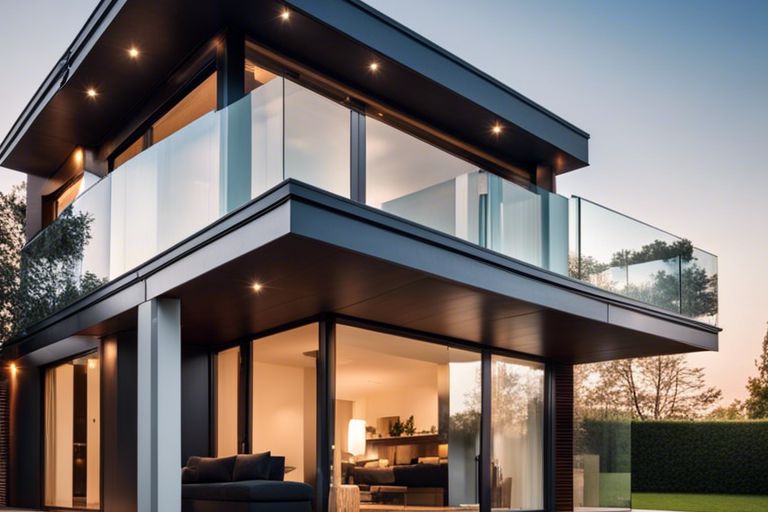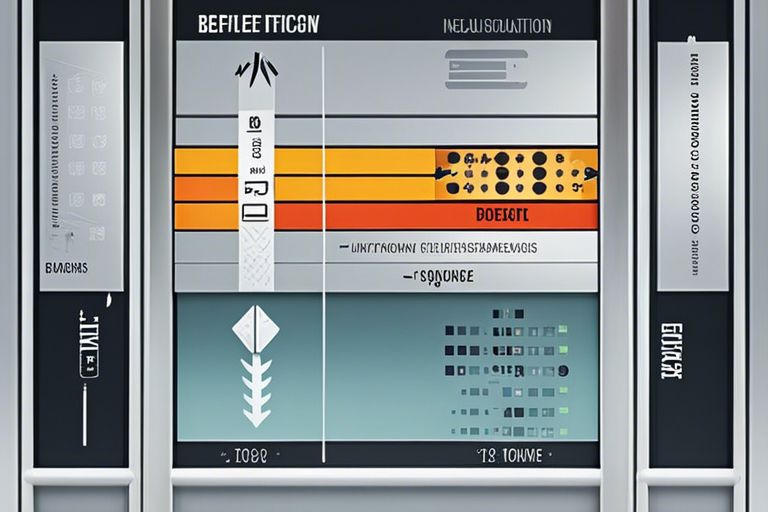Flat rooflights are a popular choice for bringing natural light into a space, but their installation and maintenance come with various safety considerations that should not be overlooked. Understanding the importance of proper installation to prevent leaks and structural issues is crucial for the safety and longevity of your rooflight. Additionally, regular maintenance and inspections are essential to ensure the glass remains intact and secure, reducing the risk of accidents or breakages. It is also vital to consider slip resistance when choosing materials for the rooflight, especially in areas prone to rain or snow. By prioritising these safety aspects, you can enjoy the benefits of flat rooflights while ensuring a secure and hazard-free environment in your property.
Key Takeaways:
- Proper Installation is Crucial: Flat rooflights need to be installed correctly to ensure they are safe and secure.
- Regular Maintenance is Essential: Checking the seals, hinges, and glass of flat rooflights regularly can help prevent accidents or leaks.
- Safety Measures are Vital: Installing safety features such as anti-slip coatings and impact-resistant glass can further enhance the safety of flat rooflights.

Understanding Flat Rooflights
Definition and Types of Flat Rooflights
Flat rooflights are horizontal windows that are installed into the roof of a building to allow natural light to enter the space below. They are an excellent way to brighten up a room and create a sense of openness. There are several types of flat rooflights available, including fixed, hinged, walk-on, and opening rooflights.
Fixed rooflights are non-opening and are designed to provide a permanent source of light. Hinged rooflights can be opened manually or electronically for ventilation purposes. Walk-on rooflights are specially reinforced to allow people to walk on them safely. Opening rooflights can be fully opened to allow for maximum ventilation in a room. After determining the type that best suits your needs, it is essential to consider the size, glazing options, and energy efficiency of the flat rooflight for your project.
| Fixed Rooflights | Hinged Rooflights |
| Permanent source of light | Provides ventilation |
| Non-opening | Can be opened manually or electronically |
| Walk-on Rooflights | Opening Rooflights |
| Reinforced for walking | Maximises ventilation |
Benefits of Installing Flat Rooflights
Installing flat rooflights has numerous benefits for both residential and commercial properties. They can significantly improve natural light levels, reducing the need for artificial lighting during the day and lowering energy costs. Additionally, they can enhance the aesthetic appeal of a space, creating a modern and stylish look.
One of the key benefits of flat rooflights is their ability to improve the health and well-being of occupants by increasing exposure to natural light, which can boost mood and productivity. They also provide excellent thermal performance, helping to regulate the temperature within a building and reduce heating bills. After considering these benefits, it is clear that flat rooflights are a valuable addition to any property.

Key Safety Features of Flat Rooflights
When it comes to flat rooflights, safety is paramount. Understanding the key safety features of these architectural elements is essential for ensuring the protection of occupants and property. In this chapter, we explore into the various safety aspects of flat rooflights and why they are crucial for any building design.
Material Strength and Durability
One of the primary safety features of flat rooflights is their material strength and durability. High-quality materials such as toughened glass or polycarbonate are used in the construction of rooflights to ensure they can withstand harsh weather conditions and accidental impacts. This durability reduces the risk of breakage and provides long-lasting protection for the building below.
Additionally, the frames of flat rooflights are often made from robust materials like aluminium or steel, further enhancing their strength and stability. These materials are specifically chosen for their ability to support the weight of the rooflight itself and any potential loads, making them a reliable choice for all types of buildings.
Non-Fragility and Impact Resistance
Another crucial safety feature of flat rooflights is their non-fragility and impact resistance. Unlike traditional rooflights, which can shatter into dangerous shards when broken, modern flat rooflights are designed to be more resilient and safe. They are often tested to ensure compliance with industry standards for impact resistance, providing peace of mind for building owners and occupants.
Flat rooflights with non-fragile properties are ideal for areas where protection against accidental falls or impacts is essential. Whether it’s a rooftop terrace or a commercial building with heavy foot traffic, these rooflights offer an additional layer of safety without compromising on natural light and aesthetics.
Safety Standards and Compliance
Ensuring safety standards and compliance is paramount when it comes to flat rooflights. Adhering to regulations and standards not only guarantees the safety of occupants but also prevents potential accidents and hazards. Compliance with safety measures is essential for the longevity and efficiency of flat rooflights.
Building Regulations Relating to Flat Rooflights
Building regulations set strict guidelines for the installation and use of flat rooflights. These regulations cover aspects such as fire safety, structural integrity, and thermal performance. It is crucial to consult with building control authorities or professionals to ensure that flat rooflights meet all the specified requirements.
Additionally, building regulations stipulate the proper integration of smoke vents or automatic opening systems in flat rooflights to ensure adequate ventilation and safe escape routes in case of emergencies.
Certification and Quality Assurance
When it comes to certification and quality assurance, look for products that comply with British Standards or have CE marking. These certifications indicate that flat rooflights have undergone rigorous testing to meet safety and performance standards. Choosing certified products provides assurance of quality and reliability, giving you peace of mind knowing that the rooflights meet industry standards.
Furthermore, selecting flat rooflights from reputable manufacturers who prioritise quality control and testing processes can further guarantee the safety and durability of the products. Always check for certification labels and documentation to verify compliance with safety standards.
Installation and Maintenance for Safety
Professional Installation Practices
When it comes to installing flat rooflights for safety, it is crucial to hire professional installers who are experienced in working with these delicate structures. The installation process requires precision, ensuring that the rooflight is securely fitted to prevent any leaks or hazards.
Professional installers will follow strict safety regulations during the installation process, such as using appropriate safety equipment and tools. They will also ensure that the rooflight is fitted correctly to prevent any potential issues in the future, providing peace of mind for both the occupants and the building owners.
Regular Maintenance and Safety Inspections
Regular maintenance and safety inspections are essential to ensure the longevity and safety of flat rooflights. It is recommended to schedule annual inspections by professionals to check for any signs of wear and tear, such as cracks or leaks.
During these inspections, professionals will also clean and clear any debris or dirt that may have accumulated on the rooflight, ensuring that it functions optimally. Any issues discovered during the inspection should be addressed promptly to prevent any further damage and maintain the safety of the rooflight.
It is important to note that neglecting regular maintenance and safety inspections can lead to costly repairs and potential safety hazards. By staying proactive and addressing any issues promptly, you can ensure the safety and longevity of your flat rooflights.

The Safety Aspects of Flat Rooflights Explained
Flat rooflights are a popular choice for bringing natural light into a space, but it is essential to understand the safety aspects involved. By considering factors such as material durability, impact resistance, and suitable installation methods, the risks associated with flat rooflights can be minimised. Regular maintenance and adherence to safety guidelines are crucial in ensuring the longevity and safety of flat rooflights. Understanding these safety aspects will not only enhance the overall performance of flat rooflights but also provide a secure and well-lit environment for occupants. Keep in mind, prioritising safety when it comes to flat rooflights is key to enjoying their benefits to the fullest.
FAQ
Q: What are the key safety aspects to consider when installing flat rooflights?
A: Safety aspects to consider when installing flat rooflights include ensuring the rooflight materials are impact resistant, using non-slip walkways for maintenance, and following proper installation guidelines to prevent leaks and accidents.
Q: How can regular maintenance improve the safety of flat rooflights?
A: Regular maintenance of flat rooflights can improve safety by allowing for early detection of any damage or issues, preventing water ingress and potential leaks, and ensuring that mechanisms such as opening and closing functions are working correctly to avoid accidents.
Q: Are there any safety regulations or standards that need to be followed when using flat rooflights?
A: Yes, safety regulations and standards such as Building Regulations Part K in the UK outline requirements for safety glazing, protection against impact, and safe access for cleaning and maintenance purposes when using flat rooflights. It is essential to adhere to these regulations to ensure the safety of occupants and maintenance personnel.






